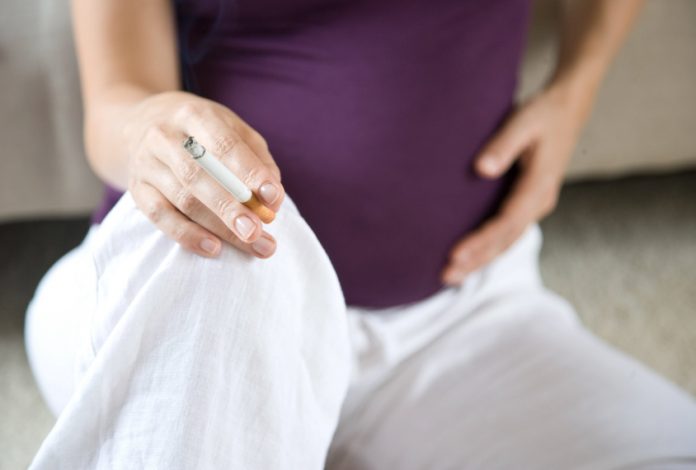One out of five women in Los Angeles currently smoke. Despite the impact on their health and that of their developing fetus, some continue to smoke during pregnancy. A new study notes that the negative impact on their offspring does not end at birth, when intrauterine exposure stops. Swedish researchers reported their findings in the March issue of the British Journal of Psychiatry.
Researchers at the Karolinska Institutet, Department of Public Health Sciences in Stockholm, Sweden reported that smoking during pregnancy may increase the risk of nicotine dependence of their offspring. Furthermore, the risk appeared to be greater in female offspring. The researchers conducted a prospective longitudinal study of 3,020 Swedish youths. The subjects were followed from age 11 to 18. Information was obtained from self-administered parental and repeated youth questionnaires. Tobacco use was assessed at age 11 and six more times during follow-up. The annual participation rate ranged from 87% to 96%; overall, 69% of the adolescents participated in all assessments. Approximately 27% of the subjects were prenatally exposed to maternal tobacco smoke; 43% were prenatally exposed to any parental tobacco use (i.e., second hand smoke from the father). During follow-up period, 1,007 children started using tobacco. Of those individuals, 41.7% of those exposed to prenatal maternal tobacco use began smoking and 30.6% of the children not exposed took up the habit. Of the 1,007 who started using tobacco, 761 started smoking daily (the rate was 33.7% for children exposed to prenatal maternal tobacco and 22.2% for those not exposed.
The researchers also reviewed the number of children who used Swedish smokeless tobacco, known as snus. For children exposed in utero to tobacco, 38.3% used snus, compared to 29.2% of those unexposed. The figures were almost as high for those who used snus on a daily basis: 34.1%for those expose in utero and 24.8% for those exposed and unexposed, respectively.
The researchers reported that girls prenatally exposed to maternal tobacco use had a two- to threefold increased odds of experiencing a high number of withdrawal symptoms, craving for tobacco, and heavy tobacco use (five or more cigarettes or snus dips per day). Interestingly, these associations were weaker among boys; furthermore, the difference in tobacco use was not statistically significant. In addition, associations between prenatal tobacco exposure and onset of regular tobacco use in both genders appeared to be mainly explained by the parents’ social position and postnatal smoking behavior.
The authors concluded that prenatal exposure to tobacco is related to an increased risk of nicotine dependence among teenage girls.








